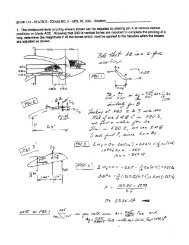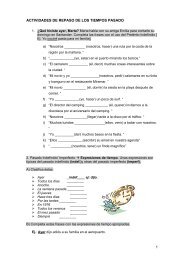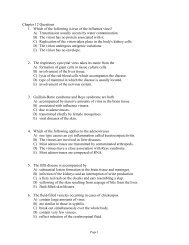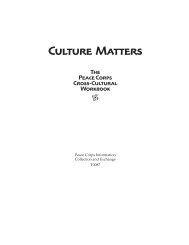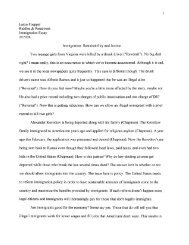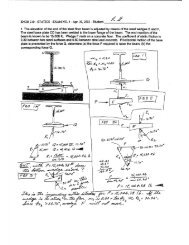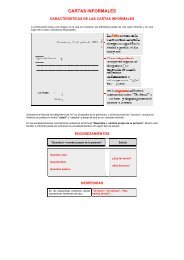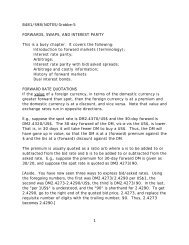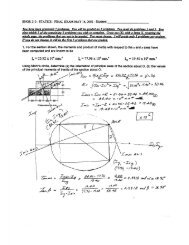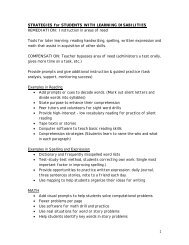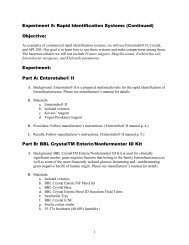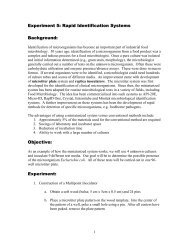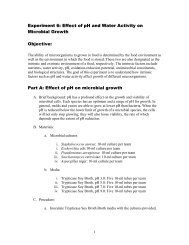Examination of Foods for Staphylococcus aureus - DB Server Test ...
Examination of Foods for Staphylococcus aureus - DB Server Test ...
Examination of Foods for Staphylococcus aureus - DB Server Test ...
You also want an ePaper? Increase the reach of your titles
YUMPU automatically turns print PDFs into web optimized ePapers that Google loves.
stored <strong>for</strong> extended periods frequently develop less black coloration than typical colonies<br />
and may have rough appearance and dry texture.<br />
2. For each dilution to be plated, place 1 ml <strong>of</strong> sample suspension onto center bottom film<br />
<strong>of</strong> 3M Petrifilm Rapid S. <strong>aureus</strong> Count Plates. Refer to the “Reminders <strong>of</strong> Use <strong>for</strong><br />
3M Petrifilm Rapid S. <strong>aureus</strong> Count Plates” that is attached to your handout.<br />
Incubate plates with clear side up in stacks <strong>of</strong> up to 10. Incubate at 35 o C or 37 o C <strong>for</strong> 24<br />
hours.<br />
3. Refer to the “Reminders <strong>of</strong> Use <strong>for</strong> 3M Petrifilm Rapid S. <strong>aureus</strong> Count<br />
Plates” that is attached to your handout. Transfer petrifilm plates to a 62 o C incubator.<br />
Incubate <strong>for</strong> 1-4 hours. With sterile <strong>for</strong>ceps, remove the round reactive disk from the<br />
outer square frame. Lift the top film <strong>of</strong> the Petrifilm plate and place the Petrifilm reactive<br />
disk in the well <strong>of</strong> the plate. Lower the top film. Apply gentle pressure across the reactive<br />
disk. Incubate plates with inserted Petrifilm reactive disks <strong>for</strong> 1-3 hours at 35 o C or 37 o C.<br />
4. Read and record results. Refer to the “Interpretation Guide Section” that is<br />
attached to your handout.<br />
Dilution 10 -1<br />
Dilution 10- 2<br />
Dilution 10 -3<br />
Dilution 10- 4<br />
Dilution 10 -5<br />
S. <strong>aureus</strong> count<br />
5. Count and record colonies on Baird-Parker Agar plates. If several types <strong>of</strong> colonies are<br />
observed which appear to be S. <strong>aureus</strong> on selected plates, count number <strong>of</strong> colonies <strong>of</strong><br />
each type and record counts separately. When plates <strong>of</strong> the lowest dilution contain 200 colonies have colonies with the<br />
typical appearance <strong>of</strong> S. <strong>aureus</strong> and typical colonies do not appear at higher dilutions, use<br />
these plates <strong>for</strong> the enumeration <strong>of</strong> S. <strong>aureus</strong>, but do not count nontypical colonies. Select<br />
> 1 colony <strong>of</strong> each type counted and test <strong>for</strong> coagulase production. Add number <strong>of</strong><br />
colonies on triplicate plates represented by colonies giving positive coagulase test and<br />
multiply by the sample dilution factor. Report this number as number <strong>of</strong> S. <strong>aureus</strong>/g <strong>of</strong><br />
food tested.<br />
cfu [Plate 1 (0.4<br />
ml)]<br />
cfu [Plate 2 (0.3<br />
ml)]<br />
cfu [Plate 3 (0.3<br />
ml)]<br />
cfu/g food<br />
Dilution 10 -2<br />
4



